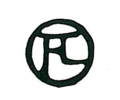
Zaidan Gallery
|
|
|||||||||||||||||||||||||||||||||||||||||||||
|
|||||||||||||||||||||||||||||||||||||||||||||
| The Elles suite is Toulouse-Lautrec's greatest lithographic achievement. It was published by Gustave Pellet in an edition of one hundred, on specially-made paper with a watermark bearing the names of the artist and publisher. The suite was made up of a cover, a frontispiece, and ten plates. Toulouse-Lautrec (1864-1901) made drawings for the series while living in various brothels, but the setting is not always obvious, with the emphasis being on the mundane. The prostitutes are seen washing, sleeping, chatting and brushing their hair, as well as undressing for a waiting client. Although he does not flatter, Toulouse-Lautrec is sympathetic to these human types, and it is only the flanêurs or gentlemen callers, who flatten into caricature. W. Wittrock, Toulouse-Lautrec: the complete (London, Sotheby's Publications, 1985) Elles, a series of ten lithographs devoted to the theme of prostitutes, was based on Lautrec's observations of daily life inside a Parisian brothel where he resided briefly in 1894. The prints are highly original in their representation of mundane aspects of the prostitutes' existence, particularly moments of intimacy and friendship...The Metropolitan Museum of Art |
|||||||||||||||||||||||||||||||||||||||||||||
|
Other prices realized by Lautrec:
|
|||||||||||||||||||||||||||||||||||||||||||||
|
Much of Henri's early childhood was spent in the Chateau de Celeyran, his mother's familial home, near the Mediterranean town of Narbonne, where he spent much time drawing and painting the life and landscape of the estate. In 1872, he was enrolled in the prestigious Lycee Fontanes in Paris for 3 years due to health reasons, and moved back to the south of France for the climate. In 1878, Henri broke his left thigh as he was getting up out of a chair. Bed-ridden, he spent his time reading, drawing and painting. A year later and just barely recovered from his first injury, he broke his other thigh whilst taking a walk. The growth of his legs was stunted forever. His illness was never identified during his lifetime, and nothing would help. Henri continued to pursue art. By 1880, he had produced as many as two and a half thousand works, in a variety of techniques. Encouraged he returned to Paris to study art. In 1881, he set up residence in Princeteau's Paris studio. In 1882, he was accepted into the studio of the famous painter and art teacher Leon Bonnat. After Bonnat became a professor at the Paris Academy of Art, Lautrec began to study under Fernand Cormon. Cormon was a talented artist in his own right, and an enthusiastic teacher. The painter would have many affairs over the course of his rather brief life. All of them would be with women far below his station, and none of them were very long-lasting. Although the artist immersed himself in the life of the lower classes -- the cabarets, the dance halls and the brothels -- he always retained an aristocratic aloofness and a sense of his own superiority. He was not attempting to become part of that life: he was rather an unprejudiced observer; a doctor or a scientist, trying to dissect it and give it life, in his art. Lautrec moved into the Montmartre district in 1884 where he met Edgar Degas, whom he came to admire. He soon began to frequent the district's cabarets where he displayed his works. That year, he also had his first exhibition at the Pau. In 1886, Lautrec met Vincent Van Gogh at Cormon's studio, where the Dutch painter had come to study. They quickly became friends, though Lautrec left the studio only a few months later, his education there concluded. By then Lautrec's art was beginning to attract greater notice. In 1887, he participated in an exhibition in Toulouse;and in Paris, he exhibited together with Van Gogh. He was invited to send some of his work to the les Vingt ("The Twenty") exhibition, taking place early in 1888, in Brussels. Van Gogh stayed with Lautrec in Paris, not long before his suicide in 1890. In 1889, Lautrec participated in the Salon des Independants for the first time and would become a frequent contributor to the Salon's exhibitions. He spent the summer on France's Atlantic coast, yachting. The cabaret Moulin Rouge in the Montmartre opened that year, and Lautrec immediately became a regular; he would often show his work at the establishment. The name Henri de Toulouse-Lautrec became inseparably linked to the Moulin Rouge, and some of his most iconic works were made there, including his notorious Moulin Rouge poster of 1891 (La Goulue), Valentin "the Boneless" Training the New Girls (1890), and others. Around 1893, moved away from the cabarets and took an interest in literature and theater. He made his first engraving in 1891, and his later works include many lithographs, such as Les Ambassadeurs: Aristide Bruant (1892), May Milton (1895), The Jockey (1899). In 1893, he took part in an exhibition devoted to painters and engravers. That year he had his first solo exhibition at the gallery of Maurice Joyant. He was part of a modern trend for the celebration of individual artistic achievement. Lautrec spent a lot of the time between 1894 and 1897 travelling. He visited London, Madrid and Toledo in Spain, Brussels, Haarlem and Amsterdam. In England, the painter became acquainted with Whistler and Oscar Wilde, both of whom he saw as role models -- the former for his art, the latter for his lifestyle. In Spain, he took inspiration from the old masters: Velasquez, Goya and El Greco. In Holland, he studied Rembrandt, Bruegel and Hals. In Brussels, in 1895 and again in 1897, he took part in exhibitions organized by the group La Libre Esthetique (The Free Aesthetic), the successors to les Vingt, where his work was exhibited side-by-side with that of Cezanne, Signac, Gauguin and Van Gogh. He was becoming increasingly so as a result of his drinking, which was rapidly spiraling out of control. In 1894 he moved into one of the brothels he frequented and lived there for some time. Some works painted from his experience there include Rue de Moulins (1894), Prostitutes Around a Dinner Table (1894), Two Friends (1894-95), In 1897, he had an attack of delirium tremens, while on summer vacation at Villeneuve-sur-Yonne. His artistic output and his health decreased sharply, as most of his days were spent in various states of intoxication. In 1899, he was confined to a mental hospital. He died on September 9th, 1901, at the age of 36, at his mother's homes in Malrome. His last two paintings were "Admiral Viaud" and "An Examination at the Faculty of Medicine". (Biography by Yuri Mataev) After Toulouse-Lautrec’s death, his mother, the Comtesse Adèle Toulouse-Lautrec, and Maurice
Joyant, his art dealer, promoted his art. His mother contributed funds for a museum to be built in Albi, his birthplace, to house his works. As of 2005, his paintings had sold for as much as US$14.5 million.
|
|||||||||||||||||||||||||||||||||||||||||||||
|
Gallery by Appointment Contact Us: Phone: 1(514)944-7027 Fax 1(514)344-6129 Address: Zaidan Gallery, 7881 Decarie Blvd., Suite 405, Montreal, Quebec, H4P2H2 Canada email: info@zaidan.ca This site contains links to other Internet sites. These links are not endorsements of any products or services in such sites, and no information in such site has been endorsed or approved by Zaidan International. Some of the links expire/change with time Payment Details: Pay Pal, Major Credit Cards, Money order/Cashier checks Personal check Wire Transfer Shipping/Handling: To Be Determined |
|||||||||||||||||||||||||||||||||||||||||||||


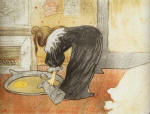
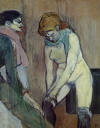

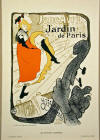


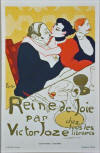

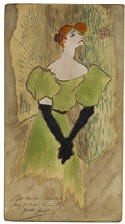





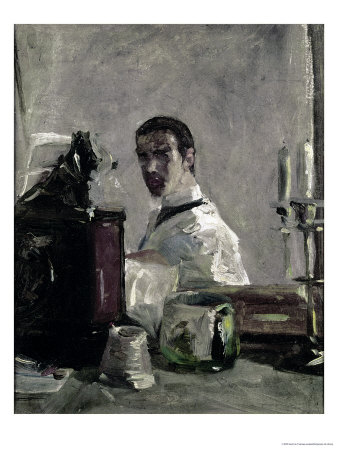 Henri-Marie Raymond de Toulouse-Lautrec-Montfa was born on November 24, 1864, in the town of Albi, in the south of France. He was the first child and heir of Alphonse Charlers Jean Marie (1838-1913), Count of Toulouse. Henri was probably first introduced to painting through his uncles, several of whom were amateur artists. He received his first tutelage in art from Rene Princeteau, a well-known sports-painter.
Henri-Marie Raymond de Toulouse-Lautrec-Montfa was born on November 24, 1864, in the town of Albi, in the south of France. He was the first child and heir of Alphonse Charlers Jean Marie (1838-1913), Count of Toulouse. Henri was probably first introduced to painting through his uncles, several of whom were amateur artists. He received his first tutelage in art from Rene Princeteau, a well-known sports-painter. 